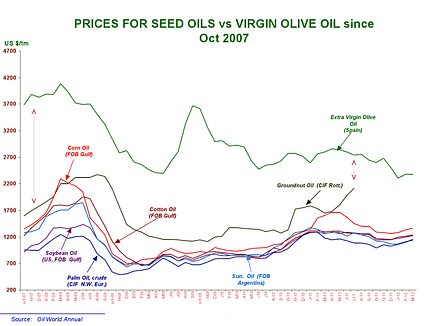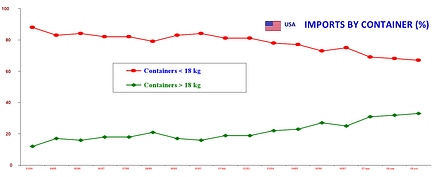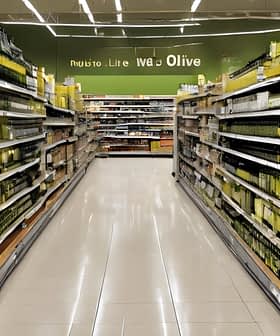
Jean-Louis Barjol (file photo)
The world is poised for an olive oil glut of more than 1.1 million tons this year, according to updated International Olive Council estimates.
With farm gate prices already at a nine-year low, the IOC says Spain’s bumper harvest will push end-of-year stocks up to the equivalent of more than a third of annual world consumption.
Speaking in Madrid at the World Bulk Oil Exhibition, IOC executive director Jean-Louis Barjol said on Thursday that revised IOC forecasts for 2011/12 set world production at 3.31 million tons, up from the 3.09 million tipped back in November. The season opened with 0.8 million tons in stocks and global consumption should total 3.08 million tons, up from just under 3 million in 2010/11 and largely on the back of increased demand in the United States.
U.S. the sector’s “savior”
“The U.S. has been for many years been the driver of the olive oil sector,” Barjol said. “Thanks to the U.S., the sector has been able to grow without drowning in a sea of olives.”
Nevertheless, global production has risen more than consumption, “hence the world stock of olive oil is gradually growing.” This would be partly off-set next year, however, with a drop in production in the wake of Spain’s drought this winter, he said.
Growth in bulk over bottled
In a closer look at the U.S. market, Barjol said that though bottled Italian olive oil dominated imports into the U.S., an interesting trend was that Spain was gaining market share, and doing so via bulk — not bottled — virgin olive oil.
He said the IOC would be keenly watching the U.S. Department of Agriculture (USDA) Quality Monitoring Program, which now covers olive oil products. It was among elements “helping maintain consumer confidence in the quality of the products,” he said.
Italy. meanwhile, remains the biggest importer in Europe. “That’s because over many, many years Italy has developed superb know-how in making olive oil blends of a recognised and consistent quality and in selling them world-wide,” Barjol said.
As reported Friday in Olive Oil Times, he said market research showed a promising trend in China — instead of regarding olive oil as an exotic gift for friends, people were increasingly buying it to use themselves.
The IOC already has promotion campaigns underway in countries including the U.S. and China, another is soon to start in Brazil, and Japan is the proposed target of a campaign to start late this year.
Pricing puzzle
Comparing olive oil with commodity prices for other edible oils such as soy, corn, palm and cottonseed, Barjol said it was clear that it cost more, “which is normal, because it’s not the same as the other edible oils, it has attributes that they don’t.”
“There’s a need here for us all to educate consumers about why a certain price needs to be paid for this product,” he said.
But while prices for the other oils tended to move as a group, fluctuating at more or less the same time, olive oil was puzzling.
“Why is it that when prices for all the other oils are on the increase, the price of olive oil doesn’t move, yet when all the others fall, it falls?”
False fraud claims?
Asked after his presentation what more should be done to reduce fraud and mislabelling, Barjol told Olive Oil Times that he didn’t think the problem was as bad as some made out.
“I’m not saying that there is none happening but I’m saying give me evidence with judicial assessment.
Some people are making claims to try to better sell their own oil.”
“We are looking for robust science,” he said. It was for similar reasons the IOC was considering organizing ring tests to check various chemical testing methods, partly as groundwork for next year’s Codex Committee on Fats and Oils meeting. The IOC remained very proud of its sensory testing method, he stressed.
Differentiate or die
Barjol said studies by Spain’s Olive Oil Agency showed that on average the cost of production in the country was higher than the prices paid to farmers. This meant that market adjustment was inevitable and at some point production would stop in some of Spain’s traditional olive groves.
“Those whose land has a steep incline will have a big problem and only one solution. They can’t mechanize so they will have to try to value-add by capitalizing on heritage value or different olive varieties if they want to compete,” he said.










